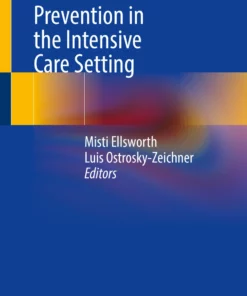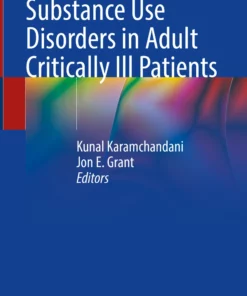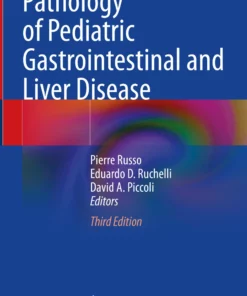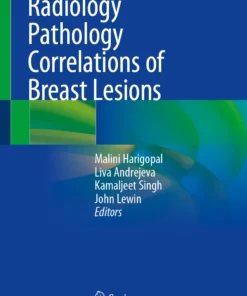The Pharmacist Guide to Implementing Pharmaceutical Care
10 $
Delivery time: Maximum to 1 hours
The Pharmacist Guide to Implementing Pharmaceutical Care
- Editors:
- Filipa Alves da Costa
- J. W. Foppe van Mil
- Aldo Alvarez-Risco
Introduction
Through the contributions of over 30 global experts, this book meets the growing need to understand the development and implementation of pharmaceutical care.
This guide to pharmaceutical Care implementation details the pharmacist’s role in providing a broad array of care to various kinds of patients, using strategies that improve humanistic, economic and clinical outcomes.
Written with a focus for students, pharmacists and researchers, this book offers multiple scenarios to advance the care of patients. It will enhance the knowledge and skills of the providers. The examples describe the details of the structured processes from pharmacists and researchers who have worked in these fields for many years: detecting drug-related problems, providing pharmaceutical care in different settings (community, nursing homes, hospitals and clinics), evaluating research-indicators and outcomes, and teaching at universities and colleges.
Readers will use this book to:
- Improve their skills to prevent, detect and solve drug-related problems
- Develop and improve communication skills to establish useful relationships with patients and healthcare professionals.
- Understand the characteristics of (pharmaceutical) care for patients in different settings
- Use different tools to showcase pharmaceutical care services
- Learn the role of standards, guidelines, protocols and indicators to guide and evaluate pharmaceutical care
- Understand the importance of the documentation of pharmaceutical care practices and create evidence and opportunities for remuneration
- Consolidate knowledge from different global studies and research outcomes
Bibliographic information
- Copyright InformationSpringer International Publishing AG, part of Springer Nature 2019
- Publisher NameSpringer, Cham
The Pharmacist Guide to Implementing Pharmaceutical Care
- Editors:
- Filipa Alves da Costa
- J. W. Foppe van Mil
- Aldo Alvarez-Risco
Introduction
Through the contributions of over 30 global experts, this book meets the growing need to understand the development and implementation of pharmaceutical care.
This guide to pharmaceutical Care implementation details the pharmacist’s role in providing a broad array of care to various kinds of patients, using strategies that improve humanistic, economic and clinical outcomes.
Written with a focus for students, pharmacists and researchers, this book offers multiple scenarios to advance the care of patients. It will enhance the knowledge and skills of the providers. The examples describe the details of the structured processes from pharmacists and researchers who have worked in these fields for many years: detecting drug-related problems, providing pharmaceutical care in different settings (community, nursing homes, hospitals and clinics), evaluating research-indicators and outcomes, and teaching at universities and colleges.
Readers will use this book to:
- Improve their skills to prevent, detect and solve drug-related problems
- Develop and improve communication skills to establish useful relationships with patients and healthcare professionals.
- Understand the characteristics of (pharmaceutical) care for patients in different settings
- Use different tools to showcase pharmaceutical care services
- Learn the role of standards, guidelines, protocols and indicators to guide and evaluate pharmaceutical care
- Understand the importance of the documentation of pharmaceutical care practices and create evidence and opportunities for remuneration
- Consolidate knowledge from different global studies and research outcomes
Bibliographic information
- Copyright InformationSpringer International Publishing AG, part of Springer Nature 2019
- Publisher NameSpringer, Cham
Related Products
Springer Ebook
Neuroradiology Board’s Favorites: 100 MRI-Based Pathology-Proven Cases Supplied with 170 MCQs
Springer Ebook
The Clinician’s Guide to Common Psychiatric Disorders: A Pocketbook for Diagnosis and Treatment
Springer Ebook
Gründe für den Schwangerschaftsabbruch: Schwangerschaftskonflikte im Kontext der Abtreibungsdebatte
Springer Ebook
Textbook of Neurointensive Care: Volume 1: Neuroanatomy, Diagnostic Assessment, Disease Management
Springer Ebook
Traumatic Brain Injuries: Navigating the Unique Terrain of the Injured Young and Aged Brains
Springer Ebook
Paediatric Endocrinology: Management of Endocrine Disorders in Children and Adolescents
Springer Ebook
Sonography of the Infant’s Hip: Principles, implementation and therapeutic consequences
Springer Ebook
Challenging Cases in Diagnostic Clinical Microbiology: Advanced Strategies and Techniques
Springer Ebook
Children with Differences in Sex Development: Taking a Multidisciplinary Management Approach
Springer Ebook
Microsurgery 101: Tips and Tricks for Microvascular and Peripheral Nerve Repair Techniques
Springer Ebook
A Phenomenological Interpretation of Schizophrenia: Subjectivation, Framework and Perspective








































































































